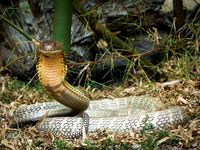histamine , Organic compound found in nearly all animal tissues, in microorganisms, and in some plants. Its release stimulates many smooth muscles to contract, such as those in the gastrointestinal tract, uterus, and the bronchi. It causes fine blood vessels to dilate and become more permeable, causing the runny nose, watery eyes, and tissue swelling of hay fever and some other allergies. Histamine appears to have a physiological role in the body’s defenses against a hostile environment, since it may be released when the body is subjected to trauma, infection, or some drugs. Under extreme circumstances, the effects of histamine lead to exaggerated responses with distressing results, as may occur in some allergic conditions (see anaphylaxis). Stinging nettles and certain insect venoms contain histamine. In humans, histamine is formed by removal of a carboxyl group from histidine. Its effects are counteracted by antihistamines.
histamine Article
histamine summary
verifiedCite
While every effort has been made to follow citation style rules, there may be some discrepancies.
Please refer to the appropriate style manual or other sources if you have any questions.
Select Citation Style
Below is the article summary. For the full article, see histamine.







